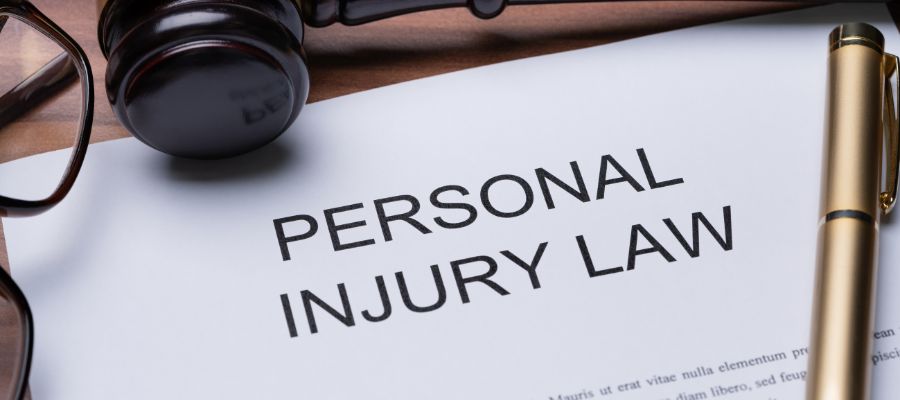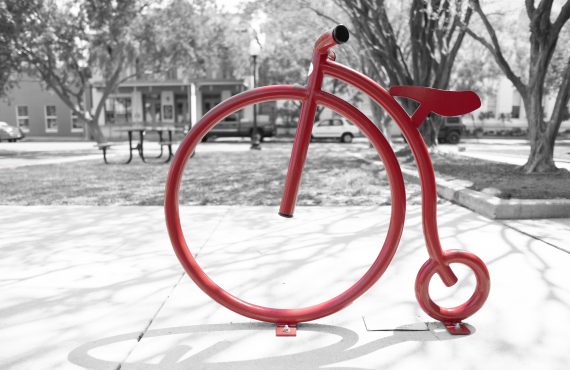In this article, you will learn about personal injury lawsuits and how they can help victims seek justice and compensation for their injuries. Whether you’ve been involved in a car accident, slip and fall incident, or any other type of personal injury situation, understanding the basics of personal injury law is important. This article will provide you with a guide that outlines the key elements of a personal injury lawsuit, including the different types of damages you may be able to claim, the process of filing a lawsuit, and what to expect during the legal proceedings. By the end of this article, you will have a better understanding of the legal options available to you as a victim and what steps you can take to protect your rights.
If you’re in need of chiropractic care in Pensacola after suffering a personal injury, this article will provide you with a better understanding of what to expect. Chiropractic care can play a crucial role in the recovery process, especially when it comes to treating musculoskeletal injuries. By delving into the benefits of chiropractic care, the different types of treatment techniques available, and how to choose the right chiropractor for your needs, you will be well-equipped to make informed decisions about your healthcare options. Whether you’re dealing with whiplash, back pain, or other soft tissue injuries, this article will guide you through the world of personal injury chiropractic care in Pensacola.
What is a personal injury lawsuit?
A personal injury lawsuit refers to a legal case filed by an individual who has suffered physical or emotional harm due to the negligence or intentional actions of another party. These lawsuits aim to seek compensation for the damages incurred, including medical expenses, loss of income, pain and suffering, and other related losses.
Definition of personal injury lawsuit
A personal injury lawsuit is a civil legal action that allows an injured person, known as the plaintiff, to seek legal redress from the party responsible for their injury, known as the defendant. The plaintiff must prove that the defendant’s negligent or intentional actions caused their injuries.
Types of personal injury cases
personal injury cases can arise from various situations, including:
-
Car accidents: These cases involve injuries sustained in automobile collisions caused by negligent driving, such as speeding, distracted driving, or drunk driving.
-
Slip and fall accidents: These cases occur when a person slips, trips, or falls due to hazards or dangerous conditions on someone else’s property, such as wet floors, icy sidewalks, or inadequate lighting.
-
Medical malpractice: These cases involve injuries caused by healthcare professionals, such as doctors, nurses, or hospitals, due to negligence, misdiagnosis, surgical errors, or medication mistakes.
-
Product liability: These cases arise when injuries occur due to defective or dangerous products, such as faulty machinery, defective drugs, or contaminated food.
-
Workplace accidents: These cases involve injuries sustained on the job due to unsafe working conditions, lack of proper training, or employer negligence.
Importance of personal injury lawsuits
Personal injury lawsuits play a vital role in providing justice and fair compensation to victims of negligence or intentional harm. These lawsuits hold the responsible parties accountable for their actions and discourages future instances of negligence. They also provide financial support to injured individuals, enabling them to cover medical expenses, lost wages, and other damages incurred due to the injury.
Initial steps after a personal injury
If you have suffered a personal injury, it is crucial to take certain immediate steps to protect your rights and strengthen your potential personal injury lawsuit.
Seeking medical attention
The first and most important step is to seek prompt medical attention for your injuries. Even if you believe your injuries are minor, it is essential to have a medical professional assess and document your condition. This medical documentation will serve as crucial evidence for your personal injury claim.
Documenting the incident
After receiving the necessary medical care, it is crucial to document the details surrounding the incident that caused your injuries. This includes taking photographs of the scene of the accident, gathering contact information from any witnesses present, and making notes of the date, time, and circumstances leading up to the incident.
Reporting the incident
Report the incident to the relevant authorities, such as the police or your employer. In the case of a car accident, contact the police to file an official report. In a workplace accident, inform your supervisor or human resources department. Reporting the incident ensures that an official record is created, which can be used as evidence during your personal injury lawsuit.
Preserving evidence
Preserving key pieces of evidence is crucial to building a strong personal injury case. This can include retaining any damaged property involved in the incident, keeping medical records, preserving any physical evidence, and maintaining a journal to record your pain, suffering, and the impact of the injury on your daily life.

This image is property of Amazon.com.
Hiring a personal injury attorney
To navigate the complex legal process of a personal injury lawsuit successfully, it is highly recommended to hire an experienced personal injury attorney. An attorney can guide you through the legal intricacies, protect your rights, and maximize your chances of receiving fair compensation for your injuries.
Why hiring an attorney is important
A personal injury attorney specializes in personal injury law and has the knowledge and expertise necessary to handle your case effectively. They have experience dealing with insurance companies, negotiating settlements, and representing their clients in court if necessary. An attorney can accurately assess the value of your claim, build a strong case on your behalf, and fight for your rights to ensure you receive fair compensation.
Qualities to look for in a personal injury attorney
When choosing a personal injury attorney, it is essential to consider certain qualities. Look for an attorney who has:
-
Experience: An attorney with a significant amount of experience in personal injury law is more likely to have a deep understanding of the legal system and how to navigate it successfully.
-
Track record of success: Research the attorney’s past cases and their success rate. Look for testimonials from satisfied clients or awards and recognition within the legal community.
-
Communication skills: A good attorney should be a strong communicator, able to explain complex legal concepts in a way that you can understand. They should also be responsive to your questions and concerns throughout the legal process.
-
Resources: Personal injury cases often require extensive resources, such as expert witnesses, investigators, and medical professionals. Ensure that your attorney has access to these resources and can leverage them effectively for your case.
Costs and fees associated with hiring an attorney
Many personal injury attorneys work on a contingency fee basis, meaning they only collect fees if they win your case. Typically, they will receive a percentage of your settlement or court award as their fee. It is crucial to discuss the fee structure and any additional costs, such as filing fees or expert witness fees, with your attorney before hiring them.
Proving negligence in a personal injury case
In a personal injury lawsuit, proving negligence is a key element in establishing the defendant’s liability for your injuries. Negligence refers to the failure to act with the level of care that a reasonable person would in similar circumstances.
Understanding the concept of negligence
To prove negligence, you must establish four key elements:
-
Duty of care: You must show that the defendant owed you a duty of care. For example, drivers have a duty of care to operate their vehicles safely and follow traffic laws.
-
Breach of duty: You must prove that the defendant breached their duty of care. This can be shown by demonstrating that they acted in a way that a reasonable person would not have under similar circumstances.
-
Causation: You must establish a causal connection between the defendant’s breach of duty and your injuries. This requires demonstrating that their actions or negligence directly caused your injuries.
-
Damages: Finally, you must show that you suffered actual damages, such as medical expenses, lost wages, or pain and suffering.
Collecting evidence to establish negligence
Collecting strong evidence is crucial to proving negligence in a personal injury case. This can include:
- Photographs or videos of the accident scene
- Eyewitness statements
- Police reports
- Medical records and bills
- Expert opinions
- Surveillance footage
- Accident reconstruction reports
It is important to gather as much evidence as possible and retain all documentation related to your injuries and the incident that caused them. This evidence will help demonstrate the defendant’s negligence and strengthen your case.
Expert witnesses in personal injury lawsuits
Expert witnesses can play a significant role in a personal injury lawsuit. These individuals possess specialized knowledge or expertise in a particular field that is relevant to your case. For example, a medical expert witness can provide testimony regarding the extent of your injuries and the long-term effects they may have on your life.
Expert witnesses can provide unbiased opinions and present scientific or technical evidence to support your claim. Their testimony can help establish the defendant’s negligence and strengthen your case’s chances of success.
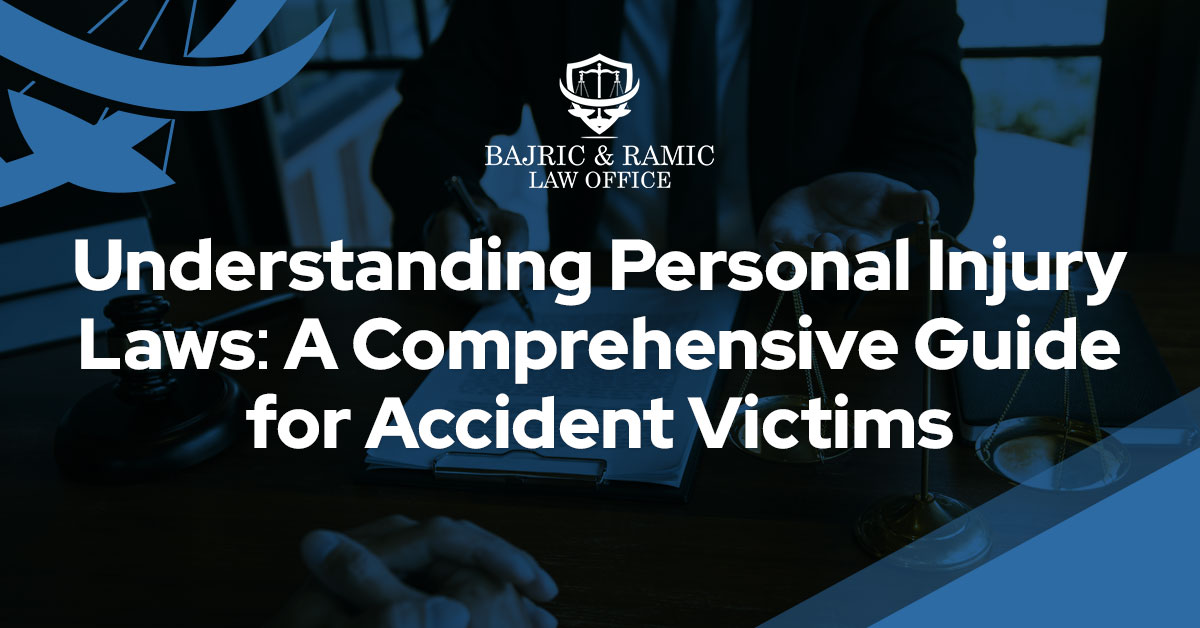
This image is property of brlegal.net.
Compensation in personal injury lawsuits
When pursuing a personal injury lawsuit, understanding the types of compensation available is essential. Compensation aims to restore you, as much as possible, to the position you were in before the injury occurred.
Types of compensation available
Personal injury compensation can be divided into two main categories:
-
Economic damages: These damages cover the quantifiable financial losses you have incurred as a result of your injury. This can include medical expenses, rehabilitation costs, lost wages, loss of earning capacity, and property damage.
-
Non-economic damages: Non-economic damages compensate for the more subjective losses you may have suffered. Examples include pain and suffering, emotional distress, loss of enjoyment, loss of companionship, and loss of consortium.
Calculating economic damages
Calculating economic damages requires gathering evidence of the specific financial losses you have incurred. This can include medical bills, receipts for prescription medications, invoices for rehabilitation services, and documentation of lost wages or reduced earning capacity.
To ensure an accurate calculation of economic damages, it is essential to retain all relevant documentation and work with your attorney to compile a comprehensive list of the financial losses you have suffered as a result of the injury.
Calculating non-economic damages
Unlike economic damages, which have a clear monetary value, calculating non-economic damages is more subjective. There is no set formula for determining a specific dollar amount for non-economic losses.
Courts or insurance adjusters may consider various factors when determining the value of non-economic damages, such as the severity of your injuries, the impact on your daily life, the duration of your recovery, and the emotional distress you have experienced. Your attorney can help present these factors effectively to maximize the value of your non-economic damages.
Punitive damages in personal injury cases
In certain situations, the court may award punitive damages in addition to compensatory damages. Punitive damages are intended to punish the defendant for their particularly reckless or intentional actions, rather than to compensate the plaintiff for their losses.
Punitive damages are relatively uncommon in personal injury cases and are typically only awarded in cases involving egregious or intentional misconduct. The purpose of punitive damages is to deter the defendant and others from engaging in similar conduct in the future.
The personal injury litigation process
The personal injury litigation process consists of several stages, each with its own requirements and opportunities for resolution.
Filing a complaint
The first step in a personal injury lawsuit is filing a complaint. The complaint outlines the details of your case, including the parties involved, the defendant’s alleged negligence, and the damages you are seeking. Once the complaint is filed, the defendant has the opportunity to respond, typically by filing an answer or a motion to dismiss.
Discovery phase
During the discovery phase, both parties gather evidence to support their respective claims. This can include exchanging documents, deposing witnesses, and submitting written interrogatories. The discovery process allows each side to understand the strength of the other’s case and evaluate potential settlement options.
Negotiations and settlements
The majority of personal injury cases are resolved through settlements rather than going to trial. Your attorney will engage in negotiations with the defendant’s legal team or insurance company to reach a mutually agreeable settlement. Settlements can offer a quicker resolution to your case and allow you to receive compensation without the uncertainty and expenses associated with a trial.
Going to trial
If a settlement cannot be reached, your case may proceed to trial. During the trial, both sides present their evidence and arguments before a judge or jury. A verdict is reached, and if the plaintiff is successful, the court will determine the amount of compensation to be awarded. Going to trial can be a lengthy and complex process, but it may be necessary to obtain fair compensation if a settlement cannot be reached.
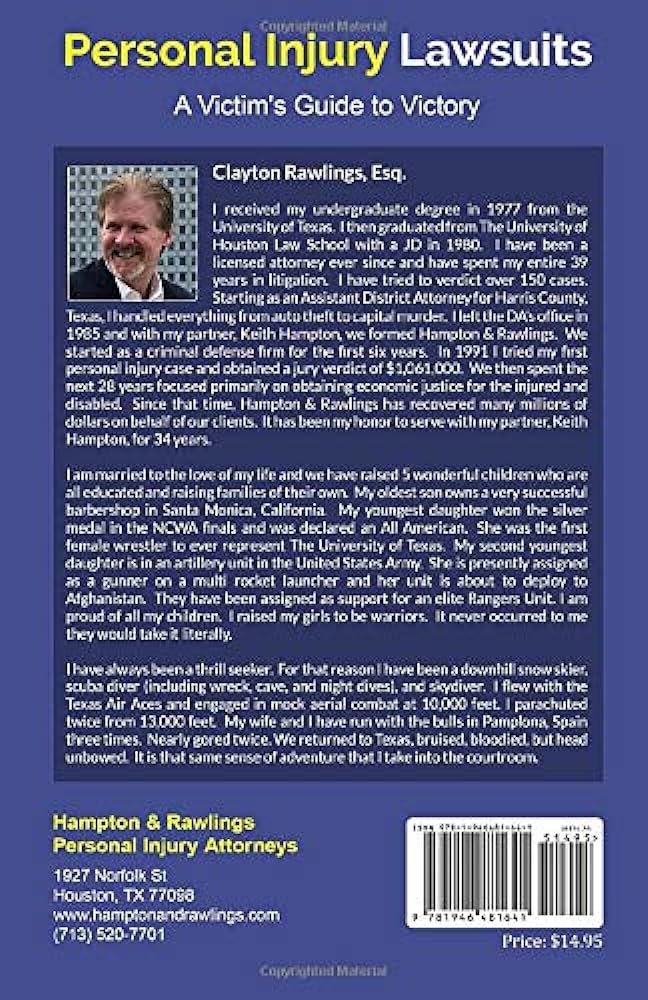
This image is property of Amazon.com.
Common defenses in personal injury cases
Personal injury defendants often employ various defenses to contest liability and minimize their potential financial responsibility. Some common defenses include:
Contributory negligence
Contributory negligence is a defense that alleges the plaintiff’s negligence contributed to their own injuries. If the defendant can prove that the plaintiff’s actions were negligent and a significant contributing factor to the injury, it may reduce the defendant’s liability or bar the plaintiff from recovering any compensation.
Assumption of risk
Assumption of risk is a defense that asserts the plaintiff voluntarily assumed a known risk associated with a particular activity or situation. For example, if you were injured while participating in a high-risk sport, the defendant may argue that you were aware of the inherent dangers and willingly accepted those risks.
Comparative negligence
Comparative negligence is a defense that assigns a percentage of fault to both the plaintiff and the defendant in proportion to their contribution to the injury. Depending on the jurisdiction, comparative negligence can reduce the plaintiff’s recoverable compensation by the percentage of fault attributed to them.
It is essential to consult with your attorney to understand the potential defenses that may arise in your personal injury case and how to counter them effectively.
Statute of limitations
When considering a personal injury lawsuit, it is important to understand the time limits, known as the statute of limitations, within which you must file your claim. The statute of limitations varies depending on the jurisdiction and the type of personal injury case.
Understanding the time limits for filing a personal injury lawsuit
The statute of limitations sets a deadline by which a personal injury lawsuit must be filed. If this deadline is missed, you may lose your right to seek compensation for your injuries. It is crucial to consult with an attorney to determine the applicable statute of limitations for your case.
Exceptions to the statute of limitations
In some situations, exceptions or tolling periods may apply, extending the statute of limitations. For example, if the injury is not immediately apparent, the statute of limitations may begin from the date the injury was discovered or should have reasonably been discovered.
Each jurisdiction has its own specific rules regarding exceptions to the statute of limitations, and it is essential to consult with an attorney to understand how these rules apply to your case.
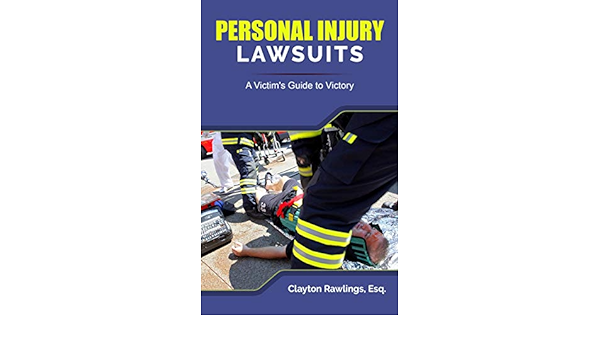
This image is property of Amazon.com.
Alternative dispute resolution methods
Alternative dispute resolution methods offer alternatives to traditional litigation, providing potential avenues for resolving personal injury cases without going to trial.
Mediation
Mediation involves a neutral third party, known as a mediator, facilitating negotiations between the plaintiff and defendant to reach a mutually agreeable settlement. Mediation is a voluntary process and can save time and money compared to a trial. The mediator does not make binding decisions but rather helps the parties find common ground to resolve their dispute.
Arbitration
Arbitration is a more formal process than mediation, often resembling a mini-trial. An arbitrator, who is a neutral third party, reviews the evidence presented by both sides and makes a final decision. Unlike mediation, the arbitrator’s decision is binding, and the parties typically have limited opportunities for appeal.
Arbitration can provide a quicker resolution than a trial and may be required in certain cases, such as when a contract includes a binding arbitration clause.
Conclusion
Understanding personal injury lawsuits is crucial for victims seeking justice and fair compensation for their injuries. By following the initial steps after an injury, hiring a personal injury attorney, and proving negligence, victims can navigate the legal process effectively.
The personal injury litigation process can be complex, but with the right legal guidance, victims can seek the compensation they deserve. Whether through negotiations, settlements, or a trial, pursuing a personal injury lawsuit can help victims reclaim their lives and hold negligent parties accountable.
If you have suffered a personal injury, consult with a personal injury attorney to fully understand your rights and explore the options available to seek compensation. With professional legal guidance, you can increase your chances of a successful outcome and receive the resources you need to recover and move forward.
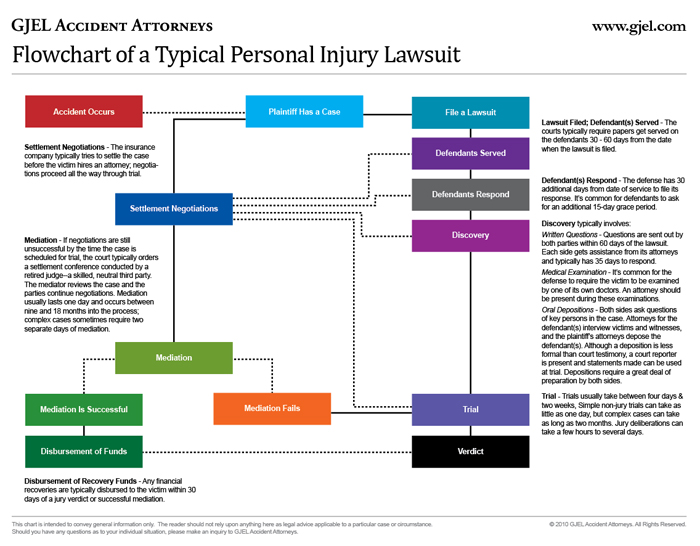
This image is property of www.gjel.com.


